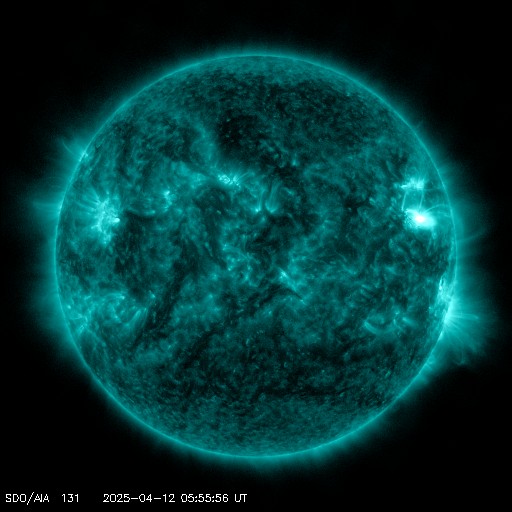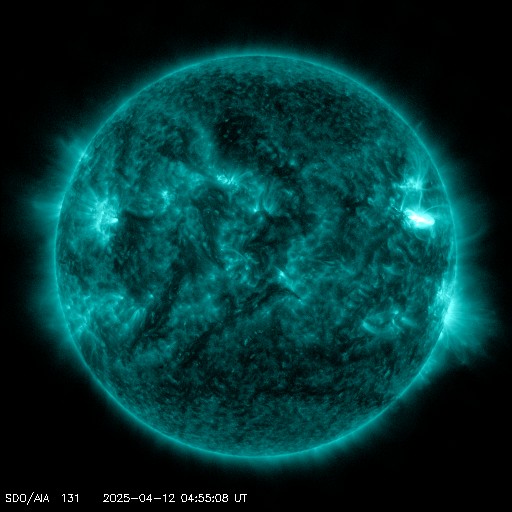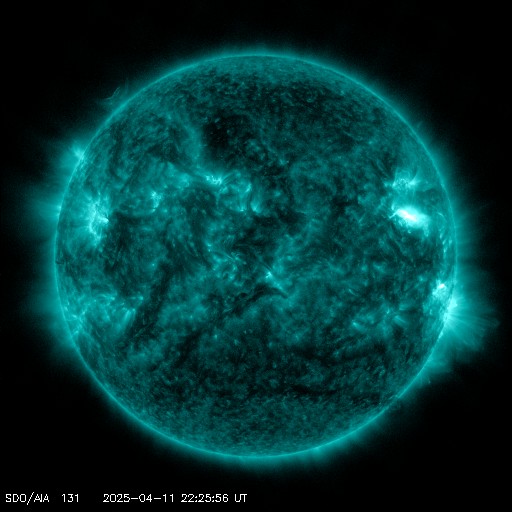Viewing archive of Monday, 5 November 2001
Solar activity report
Any mentioned solar flare in this report has a scaling factor applied by the Space Weather Prediction Center (SWPC). Because of the SWPC scaling factor, solar flares are reported as 42% smaller than for the science quality data. The scaling factor has been removed from our archived solar flare data to reflect the true physical units.
Report of Solar-Geophysical Activity 2001 Nov 05 2200 UTCPrepared by the NOAA © SWPC and processed by SpaceWeatherLive.com
Joint USAF/NOAA Report of Solar and Geophysical Activity
SDF Number 309 Issued at 2200Z on 05 Nov 2001IA. Analysis of Solar Active Regions and Activity from 04-2100Z to 05-2100Z
Solar activity was at moderate levels. Four M-class
events occurred during the period. The largest was an M2/1n flare
from Region 9684 (N07W40) at 05/0915 UTC. This region remains the
most active region on the visible disk and retains a complex
beta-gamma-delta magnetic classification. Region 9687 (S20E20)
continues to become more complex, as several of its penless spots
have acquired penumbra during the period. It also produced an M1/Sf
flare at 05/0250 UTC. New Region 9690 (S18E71) is rotating onto the
disk and is already showing high flare potential, having produced a
C8.9/Sf event at 05/1808 UTC. It is currently being reported as a 6
spot group with an area of approximately 600 millionths. It will
continue to grow in size and spot number as the entire region
rotates into view.
IB. Solar Activity Forecast
Solar activity is expected to remain
at moderate to high. Region 9684 remains capable of producing
another major flare. Regions 9687 and 9690 are also capable of
producing M-class events and have a slight chance of producing
isolated major flare activity.
IIA. Geophysical Activity Summary 04-2100Z to 05-2100Z
The geomagnetic field was at quiet to active levels. The greater than
100 MeV proton event that started on 04 November continued through
out the period and flux levels continued to climb, closing out the
day at 102 pfu. The greater than 10 MeV proton event also continued
to escalate flux levels, closing the period at 17,000 pfu. Both
proton events originated from the X1/3b flare from Region 9684, that
occurred on 04/1620 UTC. Subsequent flares may have contributed to
the continued proton flux increase. A polar cap absorption event
remains in progress.
IIB. Geophysical Activity Forecast
The geomagnetic field is
expected to be active to major storm levels on the first day of the
forecast period. A coronal mass ejection (CME) from the X1 event on
04 November is expected to impact the geomagnetic field early on 06
November. Major storming is expected with isolated severe storming
possible at higher latitudes. Conditions are expected to decrease to
unsettled to minor storming on the second day and quiet to active on
the third. However additional CME's may have been produced by
several long duration flares that occurred after the X1 event. It is
nearly impossible to detect these events as the LASCO imagery has
been degraded by the current proton storm. If there are subsequent
CME's, the geomagnetic storming could continue into the second and
third day of the forecast period.
III. Event Probabilities 06 Nov to 08 Nov
| Class M | 80% | 80% | 80% |
| Class X | 25% | 25% | 25% |
| Proton | 99% | 99% | 99% |
| PCAF | in progress | ||
IV. Penticton 10.7 cm Flux
Observed 05 Nov 235 Predicted 06 Nov-08 Nov 235/235/235 90 Day Mean 05 Nov 207
V. Geomagnetic A Indices
Observed Afr/Ap 04 Nov 004/007 Estimated Afr/Ap 05 Nov 012/015 Predicted Afr/Ap 06 Nov-08 Nov 060/075-030/030-015/012
VI. Geomagnetic Activity Probabilities 06 Nov to 08 Nov
| A. Middle Latitudes | |||
|---|---|---|---|
| Active | 30% | 50% | 35% |
| Minor storm | 40% | 25% | 15% |
| Major-severe storm | 30% | 05% | 05% |
| B. High Latitudes | |||
|---|---|---|---|
| Active | 20% | 25% | 25% |
| Minor storm | 30% | 35% | 15% |
| Major-severe storm | 50% | 35% | 15% |
All times in UTC
Current data suggests there is a slight possibility for aurora to appear at the following high latitude regions in the near future
Edmonton, AB, Gillam, MB, Saskatoon, SK, Whitehorse, YT, Yellowknife, NTJuneau, AK
Latest news
Latest forum messages
More topicsSupport SpaceWeatherLive.com!
A lot of people come to SpaceWeatherLive to follow the Sun's activity or if there is aurora to be seen, but with more traffic comes higher server costs. Consider a donation if you enjoy SpaceWeatherLive so we can keep the website online!

Latest alerts
06:09 UTC - Solar flare
Moderate M1.27 flare
05:51 UTC - Radio Blackout
Minor R1 radio blackout in progress (≥M1 - current: M1.16)
05:03 UTC - Solar flare
Moderate M1.19 flare
04:48 UTC - Radio Blackout
Minor R1 radio blackout in progress (≥M1 - current: M1.17)
Friday, 11 April 2025
22:39 UTC - Solar flare
Moderate M1.05 flare
Space weather facts
| Last X-flare | 2025/03/28 | X1.1 |
| Last M-flare | 2025/04/11 | M1.0 |
| Last geomagnetic storm | 2025/04/06 | Kp5 (G1) |
| Spotless days | |
|---|---|
| Last spotless day | 2022/06/08 |
| Monthly mean Sunspot Number | |
|---|---|
| March 2025 | 134.2 -20.4 |
| April 2025 | 139.5 +5.3 |
| Last 30 days | 136.6 -3.5 |





